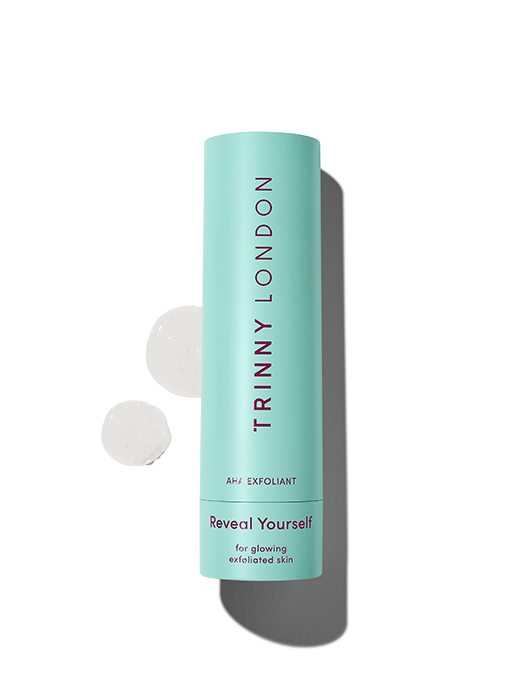
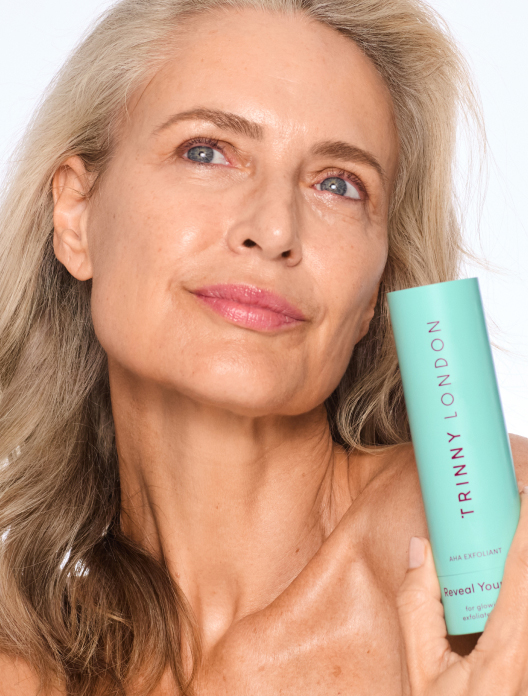
Reveal Yourself
Highly active exfoliant for glowing skin, suitable for all skin types except sensitive

If you think of your skin as a painting, then your 50s is the time when your lived experience really starts to show on the surface. You might have sun spots from an incredible holiday, laughter lines from time spent with friends and dark circles beneath your eyes from early mornings caring for your children. Of course there are the stressful times too, which also take their toll on your complexion.
While we can’t change what we’ve been through (and nor would we want to, it’s our experiences that make us who we are) that doesn’t mean we have to entirely accept their appearance on our skin. Caring for your skin in your 50s is a little bit like clearing up after a big party on a Saturday night. You want to buff away marks and replace anything that got damaged along the way, so you can start the week looking and feeling fresh and rested.
There are both structural skin changes and the signs of the fun you’ve had to contend with in your 50s. Here’s how to make the most of your complexion…
As we hit our 50s, our skin becomes thinner. The upper layers start to change in structure, with less collagen for plumpness and fewer lipids (naturally occurring fats) to keep skin soft and supple. Of the lipids that remain, many have changed in composition too. This means that skin that was previously able to tolerate strong active ingredients might no longer be quite so accommodating. Skin can become more sensitive, and be easily irked by new ingredients and a change in your skincare routine. To keep it happy, make any changes to your skincare slowly, leaving gaps between using new products to keep an eye out for any reactions. Throwing the kitchen sink at your complexion is likely to result in redness and discomfort. Take time to listen to your skin.
Whether you call them sun spots, age spots or liver spots, we’re all in agreement that they’re a pesky side effect of hitting your 50s. Not to be confused with other types of hyperpigmentation, sun spots are flat, darker marks on your skin that are slightly bigger than a freckle. They normally appear or become more prominent during the summer months, but stick around for winter too. They’re caused by an overproduction of melanin, the pigment that gives our skin its colour, triggered by sun exposure.
A daily SPF will help prevent sun spots from forming, and existing marks can be treated with vitamin C, alpha-hydroxy acids and retinoids. All three work in slightly different ways, but will help to slowly reduce the appearance of sun spots by exfoliating or increasing cell turnover. Think of it a little bit like a mark on an item of clothing – the more you treat it with a stain remover, the more it will fade. It is also worth noting here that not all marks on your skin are harmless. If you have noticed a so-called sun spot is changing in size or colour, or developing a jagged edge, seek the advice of a doctor.
Picture your skin as a wall. The cells are the bricks, and lipids (oily, waxy fats) are the mortar that holds them together. Our skin naturally makes its own lipids, but their composition changes and levels taper off as we age. Suddenly, that previously structurally sound wall is not quite so stable, with moisture able to escape and aggressors like pollution more able to sneak in. A classic case of not knowing what you’ve got until it's gone, skin then becomes dull and dry, as well as more prone to sensitivity. Incorporating topical lipids into your routine, such as ceramides and fatty acids, will help to patch up the gaps in the mortar, strengthening and nourishing the skin. Softer complexions, here we come.
Noticed that your skin feels dramatically less plump than it did in your 40s? It could be to do with your hormones. We lose 30% of our collagen during the menopause, resulting in a loss of definition and firmness, as well as structural change. Collagen acts as the scaffolding within our skin, and without it, things don’t look quite the same as they once did. Taking the time to give your skin a facial massage when cleansing or applying your moisturiser is not only a tension-releasing treat, but will help to encourage the production of collagen. As the motion of massage brings oxygen and blood to the surface, skin looks fresher and brighter too. Using a serum containing retinoids or peptides will also help kickstart dwindling collagen production to partly replace those lost stocks.
Shop the article


Highly active exfoliant for glowing skin, suitable for all skin types except sensitive
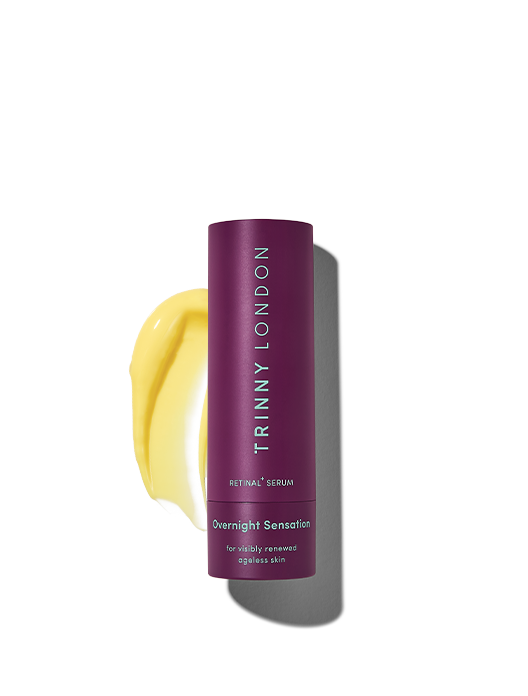
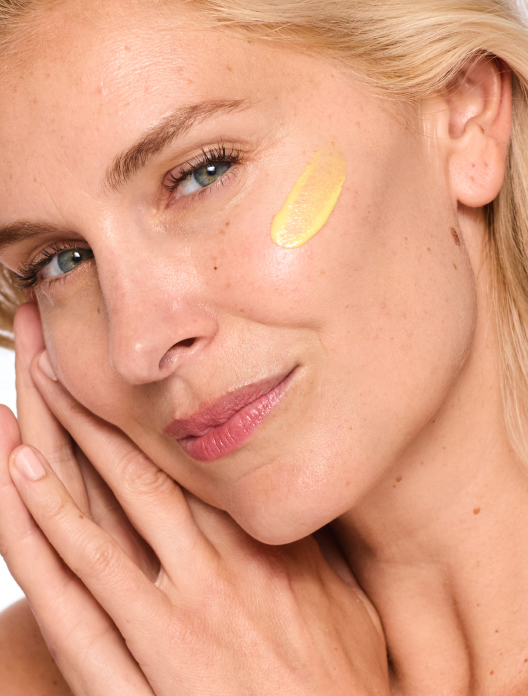
High-dose retinal serum for renewed, smooth skin, suitable for all skin types

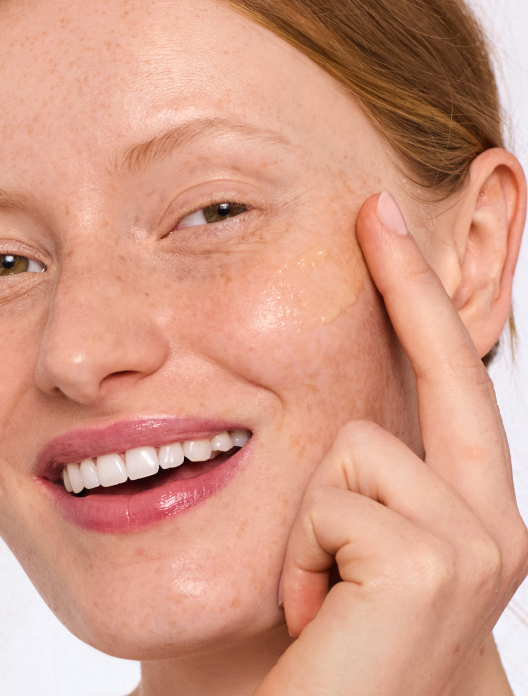
30% vitamin C serum for visibly brighter, glowing skin, suitable for highly experienced skincare users (not for sensitive skin)
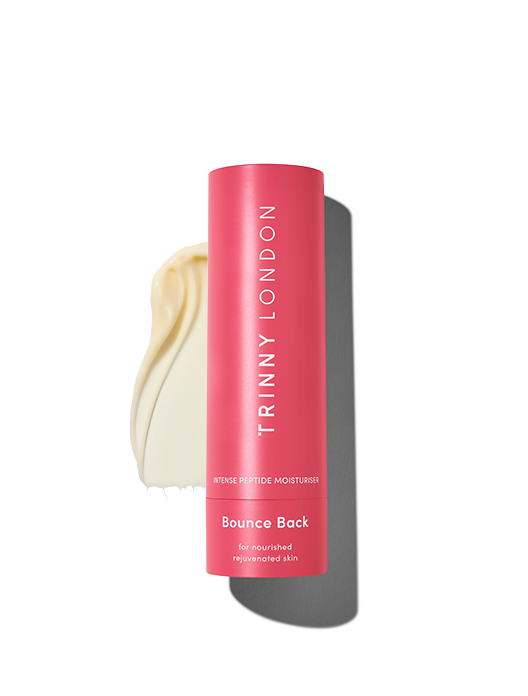
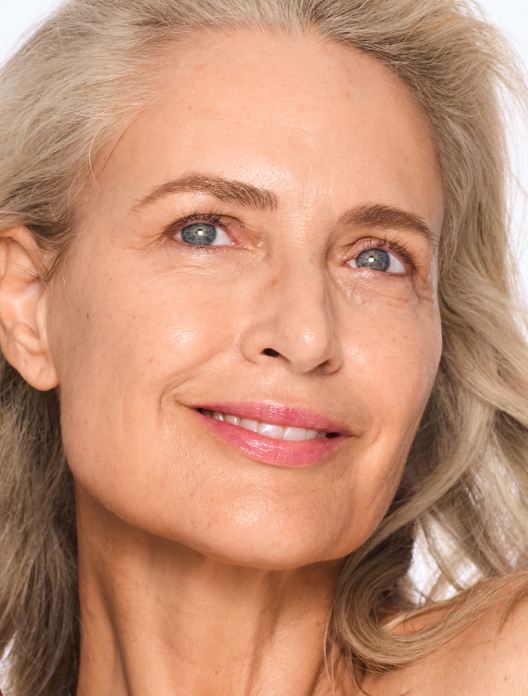
Intense peptide moisturiser for plump, bouncy skin, suitable for normal to dry skin
Read, watch and be inspired...